|
Who is Eligible for Covid-19 Booster Shots?
The recommendation by the local and national public health departments is to get Covid-19 booster shots. With the emergence of yet another variant, it’s important to stay on top of the potentially-fatal virus by inoculation. Last week, the U.S. Centers of Disease Control and Prevention made a statement about the new variant, omicron, that evolved out of South Africa and was classified on November 25 by the World Health Organization. “CDC is following the details of this new variant, first reported to the WHO by South Africa. We are grateful to the South African government and its scientists, who have openly communicated with the global scientific community and continue to share information about this variant with the U.S. Department of Health and Human Services and the CDC.” The CDC is in the process of learning and gathering more about the strain and how it spreads. That being said, the CDC is strengthening its campaign on booster shots stating that anyone who’s eligible should get the booster. Eligibility consists of anyone over the age of 18 who has been fully vaccinated for at least six months with either the Pfizer or Moderna vaccine. Anyone who is 18 or older who has been vaccinated at least two months by the J & J vaccine is eligible for a booster shot. Those planning to travel should stay up-to-date with travel restrictions and re-entry requirements. Do your due diligence before taking off. Information on requirements for the U.S. and other countries can be viewed at https://www.cdc.gov/coronavirus/2019-ncov/travelers/
1 Comment
Held the third weekend in October, the Fort Massac Encampment will once again recreate history for the community of Metropolis and surrounding towns. Last year, Covid-19 was responsible for the cancellation of the highly-anticipated campout. This year's event will continue with the tradition of the posting of colours, war reenactments, arts and crafts, and authentic food. If there are Outlander fans reading this article, familiarity with the time period and all that comes with it such as war, illness, and hardship is without a doubt. The series streamed on STARZ, takes place in the 18th century at a time when skinning a knee could be a matter of life or death. For those wounded on the battlefield, a reasonable outcome was an assured death. There were herbs for healing and liquor to numb the pain, however, penicillin wasn't discovered for another century. Today, the world is still battling the coronavirus, though more is known about the infectious disease. During the 18th century, measles was the incurable disease. First reported in America sometime in the 16th century, a vaccine wasn't available until 1963. It wasn't until the vaccine, that cases began to decline. Thinking about the timeline for the Covid-19 vaccine, it's pretty amazing how quickly an effective vaccine was available to the world. Since this is a reenactment and not the 'real thing,' it's the food, costumes, arts and crafts that will rule the day. If you don't want to miss any of the festivities, the posting of the colours ceremony is the first event and is observed both Saturday and Sunday. In the afternoon, visitors will experience mock military battles and tactics by battle reenactors. When strolling through the encampment, you'll see candlemakers, jewelry designers, blacksmiths, explorers, settlers, and soldiers all clothed in 17th and 18th-century dress. Many of the re-enactors have researched the clothing, lodging, tools, and crafts, during this time period and will be available to give those interested a look at life in the past.
After watching the posting of colours individuals may walk through the crafter's area, where crafters demonstrate everything from blacksmithing, buck-skinning, basket weaving, and candle dipping. Many crafters also have their products for sale so save some time to browse the large selection of items. There will be music and various performers entertaining attendees with skits throughout the park. The food provided by vendors dressed in authentic clothing and cooked on open fires is one of the most exciting and delicious centerpieces of the entire event. Upon arriving at the grounds of Fort Massac, the campfire smoke will be one of the first attention-getters. As you get closer to the vendors, the wonderful aroma of food takes over the senses. Some of the more popular favorites are caramelized popcorn, root beer, rock candy, turkey legs, apple crisps, pork rinds, just to name a few. Other food vending items include cabbage and cornbread, ham and beans, chicken and dumplings, elk burgers, beef stew, and chili, and many more. For nearly 50 years, the festival has given visitors a glance at what life was like for the early settlers of the Americas. For a bit of history, Fort Massac was built by the French in 1757, during the French and Indian War, and was originally called "Fort de L'Ascension." The name was changed in 1759, to honor Claud Louis d'Espinchal, So whether your desire is to learn more about the history of Fort Massac or sample some delicious food, visitors will want to plan to attend the Encampment at Fort Massac State Park. The event goes from 10 am to 5 pm on Saturday, October 16, and 9 am to 4:30 pm on Sunday, October 17. Visitors are asked to wear masks and practice social distancing. Baptist Health Paducah and Mercy Health-Lourdes Hospital released a statement today regarding COVID-19 protocols. Both hospitals are urging the public to wear masks in public places, wash their hands frequently, and avoid large gatherings. Dr. Brad Housman, Baptist Health Paducah's chief medical officers writes the following, "Baptist Health Paducah is reaching a significant stage in its fight against COVID-19. Testing, numbers of people diagnosed with COVID-19, and hospitalizations are at all-time highs. Now, more than ever, we need the public's help with masking, distancing, and most importantly, getting vaccinated. Bed capacity, in particular our ICU bed capacity, has almost reached its limit. Hospitals across the state and nation are strained, but we are diligently working every day to be able to provide care to our community. Please support our doctors, nurses, and the entire medical community, in the coming weeks." Chief Clinical Officer for Mercy Health Dr. Jenny Franke, writes, "Today, we are at a near all-time high for COVID-19 inpatients, with 41 positive patients in the hospital. Our previous high for COVID-19 patients was 43. We are rapidly approaching critical care capacity and we need our community's help to stop the spread so we can continue caring for all the patients who come to us." Incidence rate for Kentucky on Friday, August 20, 2021 is 68.95 average daily cases per 100,000 people. Western Kentucky counties in the orange are Hickman, Fulton, and Clinton. All other western Kentucky counties are in the red marking high transmission rates. Kentucky's COVID-19 positivity rate is nearly 13% with 3,869 cases. Currently, 1,780 patients are hospitalized in Kentucky with 487 in intensive care and 255 on ventilators.
Fifty-five percent of the states total population has been vaccinated. Several counties within western Kentucky have less than 40% of its eligible population vaccinated. As local hospitals plea with the community to follow protocols, rising COVID-19 cases continue across the U.S. The state of Alabama no longer has ICU availability. Other southern states are nearing capacity. Vaccinations are available at the local health departments, pharmacies, hospitals, and other places of business. Governor Andy Beshear held a news conference this afternoon, Monday, July 19, to discuss the Delta variant, a coronavirus mutation. He said the variant is starting to infiltrate Kentucky and "one solution is to get vaccinated."
In Kentucky, almost 2.25 million adults have been vaccinated with one of the three available vaccines: Moderna, Pfizer, or Johnson & Johnson. That's roughly 51% of the total population. Both the Governor and KY Commissioner of Public Health, Dr. Steven Stack, agreed this number isn't good enough. A breakdown by age group of the vaccinated is as follows: 83% of those 65 and older are vaccinated, 65% of those 50 - 64 are vaccinated, 51% of those 40-49 are vaccinated, 46% of those age 30-39 are vaccinated., and, of those 18 - 29, about a third of that population has been vaccinated or 36%. Beshear stated that the biggest risk by age group for the Delta variant are Kentuckians age 18 - 49. "It's our biggest weakness," he said. Another slide shown today was a map of Kentucky emphasizing counties with less than 40% of its population vaccinated. Counties in western Kentucky included McCracken and Marshall. Beshear said if you're in any of these counties, you're likely to encounter an unvaccinated person each time you leave your house to be around the general public. The positivity rate for Kentucky this week is just under 5.5% up from a 5.12% only last week. There's been an increase in hospitalizations. Beshear said it hasn't been of the same magnitude prior to vaccinations but they're watching the data. The Delta variant has been the most aggressive of the COVID-19 strains. The reasons include: the spread, the viral load, the way the viral load breaks through, plus, for those that require hospitalization, the Delta Variant may be more fatal. FYI: How does the viral load react in the body? The amount of coronavirus in the body changes drastically over the course of the infection. The levels rise from undetectable to yielding positive test results in just hours, and viral loads continue to increase until the immune response kicks in. Then viral loads quickly decline. But viral fragments may linger in the body, triggering positive test results long after the patient has stopped being infections and the illness has resolved. (The New York Times article: You're infected with the coronavirus. But how infected?) Dr. Stack discussed a reported 6 : 1 ratio for prevention of serious illness when comparing vaccinated to unvaccinated people, meaning it's six times more likely to be seriously ill if not vaccinated. He said, "It's a choice to get vaccinated or not vaccinated...a dangerous choice." According to Forbes, a former FDA Head said that if a person contracts the variant, "It may be the most serious illness you may ever have in your life". There have been reports of clustering by local health departments around the country. There's been a steady increase from May 31 through July 16, 2021. "The Yankees just canceled a ballgame due to Covid and the Olympics are having some concerns," said Beshear. Clusters include: camp, child daycare, congregate settings, general business, places of worship, social events, and travel. "It's the way we interact with each other," said Dr. Stack. There were recommendations release today at the briefing, one of which is new. 1. All unvaccinated people have to wear masks anytime they're outside their home and inside with people they don't live with. 2. Kentuckians at higher risk for pre-existing conditions should wear masks, even if vaccinated. 3. Vaccinated Kentuckians with jobs around the general public everyday, should mask-up. 4. All unvaccinated Kentuckians, when eligible, should be vaccinated immediately. Protect yourself, protect others, and get vaccinated. Do it for the immunocompromised, the elderly, and our children. There have been cases, in Kentucky and other parts of the U.S., that have vaccinated people hospitalized. However, most of the hospitalizations and almost all of the deaths are occurring among the unvaccinated. As warm weather approaches so does the desire to get ‘summer ready.’ Covid has played a number on us physically and emotionally. I don’t know about you but I’m ready to kick it to the curb. I want to drop the weight, drop the fear, and drop the mic as I move in the direction with the 'feel good' vibes. What's the most troublesome? The belly fat. It affects the way you look and feel about yourself. I’d like to wear bright, breezy, colorful clothing and not look like a summertime tablescape. Not to mention, fitting into a bathing suit without utter humiliation. It’s not just the vanity, it’s the sluggishness that goes along with the excess belly fat. To combat the lack of energy, you exercise. And this becomes tricky when the additional abdominal fat pushes against your expanding lungs as you increase the intensity of your cardio. The workout becomes too challenging. A couple of years ago, I set out to make a change and I did. I lost 20 pounds and kept it off. Then, I started working at a job that required more sitting than standing. I began watching the grandchildren play and stopped the extra workouts. Plus, Covid hit. All of this translated into less than optimal eating habits, a more sedentary lifestyle, and stress. Is it possible to lose belly fat? Yes and you should. Abdominal fat or visceral fat located around the waist is linked to an increased risk of heart disease, diabetes, and other inflammatory illnesses. The good news is with lifestyle changes that include eating healthy, exercise, and stress reduction, you can start seeing measurable changes in the way you feel, look, and handle life’s changes. What is eating healthy? You’ve got to have a plan. Not a plan that’s so rigid even the most structured individuals couldn’t follow. The plan includes variety. Eat the colors of the rainbow; green, leafy lettuce, oranges, tomatoes, squash, eggplant, watermelon...the array of colors that God sends after a nice rain. What are the CDC guidelines for healthy eating? The Dietary Guidelines for Americans gives us an easy food routine to follow:
Eat the colors of the rainbow How many calories do I need a day?
Women should consume 1,600 calories to 2,400 calories per day. Men should consume 2,000 to 3,000 calories per day. Now, caloric intake depends on size, height, lifestyle, overall health, and activity level. Of course, the intake depends if you want to maintain weight or lose weight. Healthline.com has a calorie calculator that was created based on scientific evidence. For a woman, over 50 years of age (which includes me), a moderate to an active lifestyle is recommended. For this age group, fewer calories are required. Based on the calorie calculator, I could maintain my weight by eating 1,800 calories a day or lose a pound a week by consuming 1,300 calories per day. This is the basic plan that I followed several years ago that was very effective. To be more precise with my intake and outtake (exercise) of calories, I downloaded a free app on my phone. The one I used was MyPlate at Livestrong.com. It was perfect and I’ll be using it for this round of weight loss. For men age 46-65. consuming 2,400 calories a day is recommended. Once again, use the calculator from Healthline.com to determine your needs. What are calories? Calories are a measure of energy. If you eat more calories than you use, you gain weight. Losing weight requires eating the right foods along with burning calories through exercise. As we age, we lose muscle mass. Muscle mass is needed to help burn calories. In turn, this speeds up the metabolism which means less work burning calories. Having a good combination of cardio and weight lifting in an exercise plan will do the trick. Cardio is swimming, running, biking, walking; all help us achieve well-being. Weight lifting can be as simple as adding free weights to your routine. Remember to reduce carbohydrates, sugar, salt, trans fats, and foods containing cholesterol. Check the labels on packaged foods or, do yourself a favor, stay away from packaged foods. You can prepare a meal from whole foods just as quickly as opening up a frozen pizza, canned spaghetti, or any convenience food item. Eat soluble fibers that absorb water and form a gel that helps slow down food as it passes through your digestive system. Studies have shown that soluble fibers help to promote weight loss by helping you stay full. It may also decrease the number of calories your body absorbs from food. Try eating avocados, flax seeds, beans, and blackberries. When exercising you want to burn calories. The intensity level should be moderate to high. It’s more about frequency and duration than high intensity. For me, it’s adding more exercise into my day; exercise that promotes muscle building and the use of different muscles. Biking is great. It’s easy on the joints, you use a variety of muscles, and it makes you feel like a kid again. Also, up the cardio. As opposed to a weekly routine of exercising 150 minutes, it’s time to step it up to 300 minutes a week, doubling the activity level. Being a carbohydrate watcher is important. According to the Framingham Heart Study, people with the highest consumption of whole grains were 17% less likely to have excess abdominal fat. Side note: The FHS study was designed to identify common factors or characteristics of cardiovascular disease. For three generations, 14,000 people were followed and it was discovered that high blood pressure and high cholesterol were major risk factors for heart disease. Does stress contribute to belly fat? Yes. There’s a clear connection between cortisol levels and abdominal fat. Stress-induced abdominal fat secretes large amounts of inflammatory molecules that contribute to diabetes, insulin resistance, and heart attacks. Sharrie Thompson, RN said, “To be successful in a healthy weight program, you must deal with the body’s response to stressors. Your body is genius in preparing you to respond to stress. Cortisol and adrenaline hormones release from the nervous system to prepare you to respond quickly, have increased physical strength, run...survive. The digestive system responds to these hormones by slowing digestion. The result: weight gain around the belly. Your body needs a method to deal with these excessive hormones." Sharrie suggests breathing exercises, twenty minutes of physical activity, or drumming. To find out more about drumming, go to her Facebook page at: It’s Only Natural Paducah. Bottom line, get yourself a plan together and don’t ‘waist’ another minute. The temperature outside is conducive to a great start at a new way of living. I want to be around a long time to watch my grandchildren grow into adults, enjoy retirement, and feel the way I see myself...inside my own head. I want to be ‘young at heart’ physically and mentally. Let’s do this together! The 'big three' types of catfish include Blue, Channel, and Flathead. Is catfish healthy? For the catfish lover, living around lakes, rivers and ponds has its perks. There are those that like to catch fish and those that like to eat fish. Still, there are those that like to catch and eat fish. Whatever your pleasure there's plenty of places around western Kentucky, Northwest Tennessee, Southern Illinois, and Southeast Missouri to enjoy both activities. If you think about it, it's almost a right of passage trying a piece of golden fried, crispy catfish for the first time. That sweetness dipped in a batch of tartar sauce is 'Oh so good.' Now, don't forget the fixins. Some of the more delicious sides that go hand-in-hand with a plate full of catfish are white beans, slaw, and hushpuppies, to name a few. As the weather gets warmer and the fish get to biting, you may ask the question, "Is catfish healthy?" The answer is, it depends. Catfish is a lean protein that's low in calories. It has omega-3 fatty acids that help lower blood pressure, decrease inflammation, reduce certain cancer risk factors, and helps keep your mind sharp. On the flip side, catfish has its fair share of omega-6 fatty acids that can raise blood pressure, cause blood clots leading to heart attack or stroke, and could increase inflammation that leads to water retention or edema. What are omega-3's and omega-6 fatty acids? Omega-3 is the 'good fat' that your body needs for overall health. It comes from the food we eat. There are a number of health benefits associated with omega-3 fatty acids including anti-inflammatory components. Omega-6 fatty acids have some health benefits but ultimately, having too much of this fatty acid could counteract the benefits of the omega-3's. How does catfish compare to other fish? Catfish is a sweet, light fish that’s lean, vitamin-enriched, inexpensive, and low in mercury. Many fish contain too much mercury making it unsafe to eat everyday and in large quantities. Dietary guidelines for adults suggests eating fish twice a week consuming eight ounces or more within the week. Two of the more popular fish that surprisingly fall into the category of high mercury fish are Ahi Tuna and Orange roughy. Both should be eaten conservatively. The FDA recommends that children and women who are pregnant limit their intake of fish due to potential high levels of mercury. Twelve ounces is the maximum consumption per week of low mercury fish and fish with high mercury levels should be limited to six ounces per week. Since catfish is one of five readily available fish that are low in mercury, this makes it very attractive to eat. It's also very filling meaning you will eat less of it and be full. How does catfish compare to salmon? Regarding caloric intake, a serving of catfish or 3.5 ounces meets up to 39% of your daily protein needs and it's only 105 calories. Salmon provides about half of your daily protein needs and has more than twice as many calories as catfish. Like catfish, salmon is rich in polyunsaturated fat or the omega-3’s. Farm-raised salmon is three times higher in the omega-6 fatty acids making it a much fattier fish as compared to wild-caught salmon. If you’re going to invest in salmon for heart health, choose wild-caught salmon. When comparing the cost of catfish to salmon, catfish is much less expensive plus it’s readily available to catch in rivers, lakes, ponds, and streams. Catfish cost about four dollars a pound compared to wild caught salmon that’s three to four times as expensive per pound. A good nutritional mix of an oil fish and a whitefish each week is a good meal plan. On a side note, whitefish aren't considered an oily fish since they only contain oil in the liver. Though a fried fish plate does look appetizing, baking or grilling your fish can be just as delicious. It's all about the preparation. What’s the best way to prepare catfish? Those from the south prefer to fry their catfish. Though frying will add calories to the low-calorie fish, changing the type of oil can reduce the number of unnecessary calories. Oils that aren't good for you and contain the omega-6 fatty acids include canola, sunflower, peanut, and vegetable oil. People tend to use these because they don’t overpower the flavor of the fish. Coconut oil is the healthiest option for frying your fish. It has a neutral flavor and won't overpower the taste of the fish. In addition to changing the oil in the frying process, keep the meal lean by easing up on the breading. Using a light coating of cornmeal or flour is just as tasty if not tastier than too much breading. To get rid of some of the fishy taste, many soak their fish in milk before frying. It's a similar process when hunters soak their wild game in milk to rid the meat of the 'gamey' taste. Another tip for getting rid of fishy fish taste. Remove all 'white-yellow' meat from the shoulders. Split the catfish fillet along the lateral line and remove the dark meat. Cut the remaining flesh in finger size pieces cutting across the grain. Toss the fingers in yellow mustard until coated evenly and lightly. Then toss in the breading and fry. The fish won't taste like mustard. Other than frying your fish, you can always bake it, grill it, or pan fry it. All three choices would be healthier than deep-frying. r will be go Where’s the best place to catch catfish? During the day, look for muddy water areas or overflows. Also good are deep structures like river bends, the base of drops offs or holes. These conditions are best for lake fishing. On cloudier days, fish are more likely to come to the surface. They’re bottom dwellers so it’s important to look for spots with more shade. Over by the dam is where you’ll find channel catfish. Channel fish like the rocks around the dam and they seem to like the water flow over a dam. After a good rain, new food sources are rushed in from the streams increasing catfish interest and activity levels. What’s the best bait? Catfish will eat just about anything. One of the top choices includes worms. In fact, worms are popular bait for most fish. They’ll work dangling under a bobber or on a sinker in creeks, rivers, ponds, or reservoirs. There are a couple of hooks that work best. One is the J-shaped hook that has the two barbed-wire tips and the other is a circle hook that keeps the fish from swallowing the hook. You could use minnows to snag a fish. If you’re fishing in a pond or a lake, make sure the minnows are alive so you can get the catfish' attention. In a stream or river, it doesn’t matter so much if they're dead or alive. In fact, dead is better. Stink bait is a good bait to use because it’s appealing to catfish only. Stink bait is just that, a stinky bait that usually consists of one or two ingredients. You might be able to clean out your refrigerator and make a good stink bait yourself. If it’s not stinky, you could still use it. Regardless of whether or not you eat catfish once a week, twice a week, or everyday, the key is keeping it lean and portion-controlled to promote healthy living. Moderation is a good thing and that includes eating fish. If you want to customize your garden and save money at the same time, this is an easy go to guide to get started on your victory garden part two. After the summer of 2020, many realized that it’s not cheap to plant a garden. Victory gardens were all the rage and rushing to the local lawn and garden store to buy vegetable plants was chaotic, disappointing, and oftentimes stressful. We all have our favorite varieties of tomato, squash, and cucumbers plants. We were raised on jet stars, better boy, or beefsteak and we want what we want. However, last year's mad rush to the local farm stores may have done us in. Sometimes they were sold out which was always frustrating. Let's not forget the cost. Individual plants were three dollars or more per plant. Between supply and demand and cost, this year, you may consider germinating your own seeds indoors. How do you start vegetable seeds indoors? To start seeds indoors you’ll need quality seeds, the better quality the more likely they are to germinate or sprout. Some of the seeding companies to consider include Burpee at burpee.com, a company that’s been in the seed market since 1881, True Leaf Market at trueleafmarket.com a company that has a rewards program, Hudson Valley Seed company at hudsonvalleyseed.com that's known for their non-GMO, heirloom, and open-pollinated garden seeds, and Michigan Bulb Company at michiganbulb.com that’s very helpful for beginners. Make sure to use a potting soil as opposed to garden soil. Potting mixes like a seed starting mix will provide a good balance for holding moisture in while allowing water to drain. Seed starting mixes give your seeds the best chance of germinating and growing into healthy seedlings. These mixes are finer and lighter than regular potting soils making it easier to root. It's recommended to buy sterilized seed starting mix. You’ll see the word ‘sterilized’ on the package. This means that the manufacturer has heated the soil past the point of allowing any bacteria or harmful pathogens to survive. Seedlings are very delicate and need all the assurances they can get. Using regular garden soil isn’t recommended. It doesn’t drain as well giving seed mixes the edge when planting indoors. Seed mixes don’t contain fertilizer either. It’s actually not necessary for the germinating process. The seeds have enough nutrients to get them going. Once they begin sprouting and you can see the little green leaves, then it's time to transplant to fertilized soil for continued growth. Just as your body needs nutrients, so do seeds. In order for seeds to reach their full potential, they need good soil, light, moisture, and warmth. You’ll need containers. Think about space in your house. If there’s not much space, you may consider using egg cartons. Paper egg cartons would be the best choice for transplanting. If you’re able to cut around each single egg holder, this carton is biodegradable and can go straight into your garden. Be sure and punch holes in the bottom of your containers so water can drain. Then, simply place the egg carton on top of a tray so seeds can absorb the extra moisture. If you're going to use Styrofoam egg cartons, it will be necessary to take the transplants out of the carton and place them directly into the soil. You don’t want to put Styrofoam into the garden soil because it doesn’t break-down like the paper cartons. You’ll need to punch holes for draining too. If you don’t eat eggs, try other small plastic containers such as yogurt or jello containers. As long as you punch holes at the bottom of each container for drainage purposes, you’ll be on your way to germinating. Your seedlings need plenty of warmth and light to grow and flourish. How do you plant and care for your indoor seeds? One of the keys to getting the seeds to sprout is to follow the directions on the seed packets. It’s a delicate balance between having enough soil to cover the seed and having too much soil over the seed preventing growth. For instance, if you’re using smaller seeds they need only be covered by a thin layer of soil while larger seeds may need to go an inch deep. The standard rule of thumb is to go two to three times as deep as the seed is wide. Seeds need light to germinate. Seeds need light and they need warmth. After planting your seeds, look for a warm, dry place for them to grow. You could invest in glow lights. This may give your seeds a better chance of sprouting. However, if you don’t want the extra cost, the seedlings need about 6 - 8 hours of direct sunlight so find that sunny spot in your home. Nightshade vegetables such as potatoes, tomatoes, eggplant, and mushrooms will benefit from a heat mat. Simply lay the mat under the trays, plug it in, and it will speed up the germination process. If you’re planting small seeds, you may want to plant four or five in each container. Not all seeds will germinate. If you’re planting larger seeds, two or three will do. Can all vegetable seeds be started indoors?
The answer is almost all seeds can start indoors. If you’re thinking ahead about garden space, it’s a good time to do so. Most seeds that start indoors are typically long season crops. Long growing season refers to the length of the growing season the plant takes to grow. Some may be grown all year long. It’s usually determined by region. Typical long growing season refers to tomato plants, eggplant, okra, broccoli, squash, onions, and kale. By starting these plants indoors, you’ll be ready to transplant when the time is right. Depending on where you live, some plants such as peppers need soil temperatures to reach 75 to 80 degrees. If you wait too late to plant, you might not have enough time to experience a harvest. Seeds that will do better planting directly into the garden include peas, beans, radishes, and corn. An fact, all root vegetables prefer direct sowing. When should you start vegetable seeds indoors? As a general rule, vegetables should be sown indoors six to eight weeks before the last scheduled light freeze. For western Kentucky, the last scheduled freeze is April 14. Now is the time to buy your seeds and get them sown. To see when the last scheduled frost date is for your area, go to the following link from the Old Farmer’s Almanac. By growing seeds indoors, you get a jump-start on the season, the pleasure of watching the seeds sprout, less cost, and buyers choice from a variety of plants that may be unavailable at the local lawn and garden stores. We’re approaching our second COVID-19 summer. As many Americans begin to plan victory gardens part two, consider starting it from seeds. Johnson and Johnson is ready to ship 4 million doses of the COVID-19 vaccine Johnson & Johnson gets emergency use authorization from the FDA for COVID-19 vaccination
The FDA (Food and Drug Administration) has authorized use of the J & J COVID-19 vaccine. The single dose could be ready to ship throughout the country this week. The company says it has about four million doses ready to go and they should have another 20 million at the end of March. With losing over 500K Americans to COVID-19, another vaccine will be well-received. The vaccine is made by Janssen Pharmaceuticals, a subsidiary of J & J and has proven to be safe, effective, and flexible. The single dose vaccine doesn’t require special storage and is proven to be 72% effective overall in the U.S. against COVID-19 and 85% effective against severe forms of the virus. The vaccine was tested in more than 44,000 people ages 18 and older in the U.S., South Africa, and Latin America. In all three countries, the effectiveness of the vaccine was 66.1% after four weeks of vaccination. There are side effects to the vaccine. Most are mild including pain at the injection site, headache, fatigue and muscle pain. There were few reported cases of serious adverse events, according to the FDA, and no reported cases of anaphylaxis at the conclusion of the trial. There was further research gathered that showed the vaccine may help prevent asymptomatic infections. A study conducted by the CDC showed most cases of COVID-19 were spread through contact with asymptomatic carriers. If there's an opportunity to squash the transmission of the disease through this group, there’s even more to cheer about. “I think it’s a relatively easy call. It clearly gets way over the bar, and it’s nice to have a single-dose vaccine,” said Dr. Rubin, a member of the committee and chief of the New England Journal of Medicine. There’s so much positive data. There will be some hurdles to climb based on public perception. The two previously approved vaccines from Moderna and Pfizer have data showing a 95% effectiveness against serious COVID-19 complications/hospitalizations. J & J has touted a 72% effectiveness. Experts say the numbers are misleading and that J & J’s COVID-19 vaccine has very positive outcomes. One of the distinct differences in the numerical data is based on the fact that studies for Moderna and Pfizer took place before other variants of the disease were introduced into various populations. FDA research found that the majority of the cases that happened during the South African part of the J & J trail came from a newer and possibly more contagious variant. All are encouraged to take whatever vaccine is available. All three vaccines have proven effectiveness against serious COVID-19 complications. As the variants continue to infect sectors of the population, it’s important to get vaccinated. Most of Kentucky is in the orange zone though vigilance is still required. Graves County is now out of the red zone. The daily average of COVID-19 cases in the county have fallen below the threshold of 25 positive cases per 100,000 based on coronavirus information on ky.gov. The state of Kentucky has seen more than half of its counties drop out of the red zone. Graves is averaging between 10 -25 cases over a seven day period landing the county in the orange zone. It's still important to stay vigilant. Governor Andy Beshear said that it's too early to relax. “We have made incredible strides against this evil virus, but we can’t let up yet. Even Kentuckians who have been vaccinated should continue to mask up, social distance and keep any gatherings small. Team Kentucky, we are so close to getting through this together, but we must remain vigilant and run through the finish line to slow the spread and save as many lives as possible,” said Governor Beshear. The Graves County Health Department is receiving 100 first doses of the COVID-19 vaccine weekly. There are 2,500 seniors, 70 and older, still waiting to be vaccinated. It's important to sign up on any list available. Residents should note, however, that they must return to that same facility for the important second dose. According to Team Kentucky and Kentucky Public Health, Gibsons Pharmacy is now administering the COVID-19 vaccine in Graves County, Kentucky. You may call to register. All they need is your name, date of birth, and phone number. 270-247-1055. Regional locations in western Kentucky include Lourdes Mercy-Health, Baptist Health in Paducah and the CFSB Center in Murray. 715 East Broadway, Mayfield, KY 270-247-1055
Paducah- Today's briefing was chalked full of good information. Across Kentucky and throughout the U.S., positive news is spreading regarding steps taken to beat COVID-19. Discussions included new recommendations on wearing masks, the efficacy of the COVID-19 vaccine, the Healthy at Home Eviction Relief Fund, new vaccination sites across the state, and the COVID-19 daily numbers.
New guidelines for wearing masks to protect yourself and others against COVID-19 have been circulating over the past week. Dr. Steven Stack, Commissioner of the Department of Public Health said masks that don't fit tight across the nose and sides of the face, aren't as protective as they need to be. There's data out there that proves the rate of transmission is lessened by those who wear masks properly. A solution to this problem lies in doubling up. Wear two masks instead of one. The bottom layer should be a surgical mask and the top layer a cloth mask. There are ways to tighten the mask as well. The diagram at the top of the page shows various ways one can wear their masks more efficiently. Also discussed was the efficacy of the vaccine. It's been proven that death and serious illness due to COVID-19 can be prevented by being vaccinated. There's no data available that says a person who's been vaccinated, can't get a mild case of the coronavirus. Therefore, it's important to continue social distancing, wearing masks, and using proper hygiene. Once vaccinated, the effectiveness of the inoculation has been proven to last for 11 weeks or three months. In a recent study, Interim Clinical Consideration for Use of mRNA COVID-19 Vaccines, it states, "“While there is no recommended minimum interval between infection and vaccination, current evidence suggests that the risk of SARS-CoV-2 reinfection is low in the months after initial infection but may increase with time due to waning immunity. Dr. Stack said, "This isn't a Get out of Jail FREE card." If you've been vaccinated and find out later you've been exposed to COVID-19, contact your local health department for direction on how to proceed with the potential need to quarantine. The Healthy at Home Eviction Relieve Fund is being 'beefed up.' More money will be available for paying rent and utilities. In some instances, landlords may receive direct payments. There are 156 new vaccination sites across Kentucky. Six new regional sites, 10 Kroger locations, 15 Walmart's, and 125 pharmacies. Western Kentucky will have two Kroger stores: Paducah and Murray. Three Walmart locations: Paducah, Hopkinsville, and Mayfield. Today's COVID-19 numbers showed that positive cases are declining. There were 1,880 cases reported February 11. Hospitalizations, ICU, and ventilator patients were stable. The Positivity rate is 7.08%. There were 36 deaths reported. The COVID-19 vaccination online registration plans for two regional vaccination sites coming soon2/4/2021 Two Paducah hospitals, Baptist Health and Lourdes-Mercy Health announced their vaccination plans for the COVID-19 vaccine. The western Kentucky hospitals are the two regional vaccination sites that will be administering the vaccine to surrounding counties over the next several weeks.
Both Mercy Health and Baptist Health in Paducah will begin administering their shipments of the vaccines next week. The Purchase District Health Department learned they will soon be able to vaccinate more people. Bear in mind, the doses are primarily for those 70 years of age and older. If you're in Group A, this is what you need to know. Baptist Health Paducah will soon open up as a regional vaccination site. Chief Medical Officer Dr. Brad Housman said they will be getting 500 doses a week which will be increased to 1,000 a week when its time for second doses. Baptist Health will start administering the vaccine next Wednesday afternoon. The clinic will be inside the Barnes Auditorium at the Carson-Myer Heart Center. Dr. Housman said the plan is to have vaccination clinics for both primary and secondary doses on Monday through Thursday in the afternoon and early evening hours. To schedule an appointment, you'll need to register online and that page should be ready in the next few days. More information is to come. There's no phone number to call for Baptist Health appointments. Housman said they are working on making other resources available for people who don't have internet access. The second regional vaccination site for western Kentucky Is Mercy Health Paducah. The hospital first began vaccinating people 70 and older on January 18 at the Mercy Health Medical Pavilion with a previous allotment of 1,000 doses. They are finishing up the remaining appointments this week. Beginning next Monday, February 8, Mercy Health will start administering a new shipment of doses at the same location. Chief Clinical Officer Dr. Jenny Franke at Mercy Health said they will be getting 500 doses a week for people who have yet to be vaccinated and another 500 a week for people who need second doses. If you want to schedule an appointment, the number is 866-624-0366. As of today, Thursday, February 4, appointments are full. When calling the number, they say to keep checking back for more doses. They will have an online registration as well, however, it's not ready yet. Dr. Franke said Mercy Health was told to only schedule appointments for the next three weeks. Four amazing young women with budding careers in their respective fields. They're wives, mothers, and career-minded individuals. Each advocates for health, fitness, and clean living. They are exceptional role models for their children and young people everywhere. Click on their 'Life Story' link.
Inspire, Motivate, and Celebrate life, love, and all things lovely. Brandy Key: Life Story Women who do it all are powerful role models and this local pharmacist is Key Kristen Williams: Life Story Coming back home and raising a family is one local surgeon's ideal life Jackie Long: Life Story A woman's dream to be taken seriously goes global and she's riding the wave Sarah Wood: Life Story An Army wife's pursuit of her best self creates opportunities in virtual coaching Governor Andy Beshear announced yesterday the creation of four new regional COVID-19 vaccination sites including two in western Kentucky. The two locations in western Kentucky will be in Paducah at Baptist Health and Mercy Health Medical Pavilion. Beshear said all four sites will go live next week. “The three sites that you will see in just a little bit...are two in western Kentucky, We’ll show you those in a minute - Lourdes and Baptist in Paducah.” Beshear said. The interactive map showing vaccine locations which is found at govstatus.egov.com/kentucky-vaccine-map shows the Mercy Health location will actually be at the Mercy Health Medical Pavilion, which is next to Lourdes Hospital. The third site will be at Ephraim McDowell Regional Medical Center in Danville. And the fourth site is at the Kentucky horse park in Lexington. Beshear didn’t provide details about the dates and times when the Paducah vaccine locations will be open. The Purchase District Health Department said Mercy and Baptist will each receive 500 vaccine doses per week. Once it’s time to administer booster shots, the sites will begin receiving 1,000 doses per week. As regional sites, both locations will serve multiple counties in west Kentucky. The health department asked to be a vaccine site but was denied. The state is developing a vaccine plan for all health departments across the state. “Health Departments have been asked to target the vulnerable population with what is allocated to us. PDHD does not have a date for when vaccines will begin to be allocated to the health department again for 1st doses or the exact amount the state will allocate,” said health department officials in a Thursday news release. “Currently PDHD only has vaccines for the 2nd dose at PDHD. When PDHD receives vaccines, we will allocate them to the Health departments in Ballard, Carlisle, Fulton, Hickman, and McCracken counties in an equitable manner so that all five counties move into the next vaccination phase close to the same time. More information will be shared as it becomes available.” The Purchase District Health Department will maintain a registry for those who want to be vaccinated in the counties it serves. Sign up for that registry at purchasehealth.org. “We will continue to maintain this registry and utilize it to share information on when and where you may be vaccinated whether it is at one of our clinics or at a community partner’s site and to further inform them about the current ways that you can schedule a vaccine. You will not receive a phone call or a communication from the health department until we are able to schedule you or direct you to where you can be scheduled.” stated in the news release from the health department. Beshear shared the state’s new website where you can find out which phase of the state’s vaccination plan you belong to and where you will be able to make an appointment once you are eligible. There’s a hotline too. The state’s vaccine website is vaccine.ky.gov and the hotline is 855-598-2246. A TTY hotline is also available for people who are hearing impaired. That number is 855-326-4654. The hotline will be staffed from 8 a.m. to 7 p.m. Monday through Friday. “Hotline operators are prepared to walk a person without internet throughout what’s on the website via a phone call,” said Kentucky Public Health Commissioner Dr. Steven Stack. “For those who are vaccine eligible, the operator can help them identify a vaccine location and connect them by phone or even help them look for an available appointment. For those not currently eligible, the operator can help the caller sign up for text or email notifications.” The governor said those 70 and older will be prioritized first across the state starting on February 1 and until further notice. But, other people from phases 1A and 1B will remain eligible for vaccination. The governor expects to announce two more regional vaccination sites next Thursday, as well as additional sites February 11. If you are in Phase IA, B, or C, the Purchase District Health Department is providing a pre-registration vaccination form on the home page of its website. This quick form will help them coordinate the vaccination distribution. 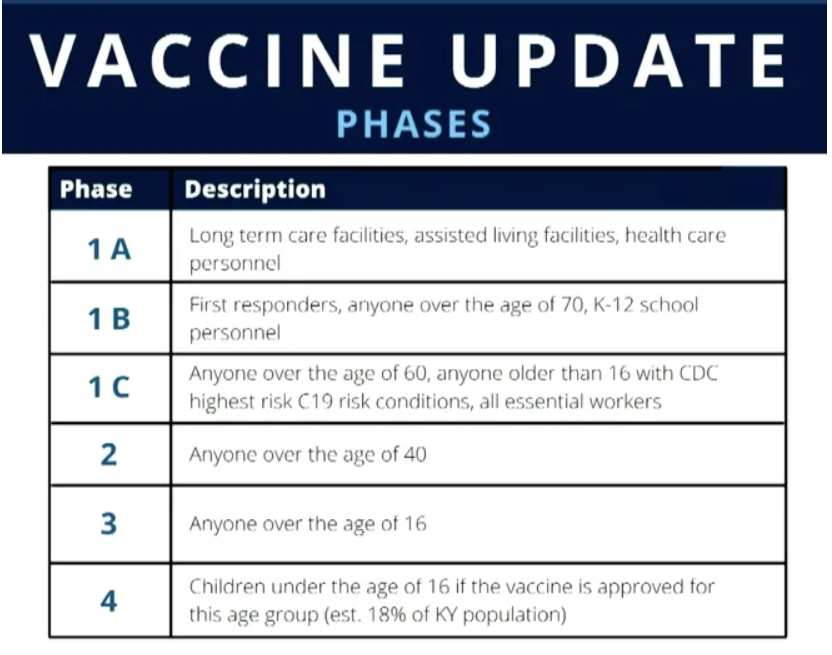 You will be contacted to schedule an appointment as the Health Department works through the vaccine distribution phases. The pre-registration form and the Department’s vaccination plan can be found at http://www.purchasehealth.org/ The Health Department is working with Lourdes Mercy Health to begin vaccinating the 70+ population. For more information about scheduling a vaccine appointment through Mercy Health, visit https://www.mercy.com/mercy-health-monitoring-coronavirus-covid-19/covid-19-vaccine/kentucky or call 866-624-0366. Kentucky COVID-19 information through January 18, 2021: Total Positive Cases: 328,668 New Cases: 1,998 Graves: 28 McCracken: 28 Marshall: 25 Calloway: 12 Caldwell: 11 Trigg: 7 Fulton: 2 Carlisle: 2 Ballard: 1 Cases under 18: 219 New Deaths: 40 Total Deaths: 3,167 Hospitalized: 1,587 ICU: 397 Ventilator: 208 Positivity rate: 11.64% Recovered: 40,761 The Purchase District Health Department has laid out a plan for those wanting to be vaccinated for COVID-19. The have published timelines, scheduling, vaccination groups, and locations on their website. One McCracken County resident just returned home from an out-of-state visit and needed some information about the COVID plan. First, they wanted to get tested for COVID-19 in case they had come in contact with the virus. Second, they were in the 70 years and older group and wanted to know ‘when it’s their turn’ to get inoculated. For those on Medicare, to receive a rapid test, the cost locally is $90, according to this source. After reaching out to the Paducah/McCracken County Health Department, it was discovered that COVID-19 testing is taking place until noon most days. The test isn’t a rapid test, however results will be provided in 2 - 4 days. The Purchase District Health Department (PDHD) covers five counties in our area: McCracken, Ballard, Carlisle, Fulton, and Hickman. They are currently taking registration information for those 70 and older that want to be vaccinated. Either you may go online to the PDHD website: purchasehealth.org or register by phone. If you’re unable to register online, those in group 1B (including those 70 and older) will phone 270-444-9625, extension 161, and leave their name, phone number, and vaccination phase. After leaving your registration information or registering online, those 70 and older will be placed on a list for scheduling the inoculation. You’ll receive a phone call from the Purchase District Health Department (PDHD) when your group is getting close to having its turn. The vaccine appointments will take approximately 15 minutes. Vaccination locations for those registering for appointments. As it stands: 70% of school personnel (K-12), in the five counties, will complete vaccinations by January , 2021. The remaining 30% will be completed by January 29, 2021.
The 70 and over age group has an estimated start date of February 1, 2021. The complete group for Phase 1B is first responders, K-12 (teachers, staff, and daycare), and 70 and older. After 1B is 1C. This group is 60 and older, 16 and older with high risk disease states, and all other essential workers. WKCTC teachers, employees, and staff will fall under this category. As of Thursday, January 14, Kentucky has vaccinated 172, 537 226,185 vaccines have reached Kentucky 143,560 have been administered to the public Long term care facilities in Kentucky have received 98,475 28,977 have been administered Today, January 9, Kentucky surpassed 300,000 positive COVID-19 cases since the pandemic first began. "This is everywhere," said Governor Andy Beshear in his COVID-19 update. There were 4,240 new cases reported today with a positivity rate of 12.32%, the highest since May. Twenty deaths were reported for a total of 2,876 Kentuckians that have lost their battle with COVID-19.
Governor Beshear said, "We all have a duty to fight back against it. We need you to be at your best and we need to make sure we have the same tools available from our Department of Public Health to fight this virus that other states do." Beshear continued, "To date, our efforts have put us in a place based on adjusted population where we have lost half the people that Tennessee has. We have lost 1/4 of the people that North and South Dakota have lost. Failure to take this virus seriously and fail to respond to it like we are in a war, the battlefield can change making it a difference between life and death." Governor Andy Beshear shared a COVID-19 warning from the White House today regarding the escalation of COVID-19 cases. In the update, the Governor said that the rate of seriousness over previous surges is twice as concerning as it has been since the pandemic started. The White House believes the U.S. has a variant strain of coronavirus that has evolved within our country that is 50% more transmissible than the original CoV-2. The White House may be calling for aggressive mitigation for a more aggressive virus. The cause of the fourth surge in Kentucky and throughout the U.S. is believed to be the result of holiday gatherings. Beshear said that before the holidays, the third surge in Kentucky was beginning to see a decline in cases and that’s no longer the case. He urged Kentuckians to get tested if they had been around anybody over the holidays that doesn’t live in their household. To date, Kentucky has vaccinated 107,799 people. Just over the last three days, 47,000 doses of the 107K were administered. As it stands, Kentucky receives 53,000 doses of the vaccines each week to be administered. Dr. Stack said this will be the number received at least through February. Once vaccines arrive at their destination, the goal for distribution is to have 90% of all vaccines received administered within seven days. There’s been some concern over vaccination hesitancy within the long-term care population. Beshear is encouraging the healthcare population and those that are in the Phase 1A group to get vaccinated and show others that it’s safe. To televise that they’re taking the virus. It’s a vaccination that’s 95% effective. Kentucky’s ranking among other states in the country regarding COVID-19 statistics: As it stands, Kentucky is ranked 29th across the country in the rate of increase in positive COVID-19 cases. It’s ranked 41st in the number of new deaths and 19th in the country for increased positivity rate. Friday, January 8: Positive COVID-19 cases is 4,750 with 296,167 overall Positivity rate is 11.93% 1,748 are hospitalized 393 ICU 217 on ventilators There were 13 new deaths reported and three were from Marshall County. To date, there have been 2,856 deaths and over 2,000 were from long-term care facilities. Dr. Steven Stack, commissioner of Kentucky's Department of Public Health hopes to start vaccinating those 70 and older (Phase 1B) over the next several weeks.
Purchase District Health Department Director Kent Koster discusses mass vaccinations and the need for indoor inoculations. Today’s meeting with city and county leaders in McCracken County discussed COVID-19 vaccine distribution for the purposes of keeping the public informed. Mayor George Bray, Judge Executive Craig Clymer and Director of the Purchase District Health Department Kent Koster were available on hand as disseminators of information and to answer questions. The format was by Zoom invite, YouTube video, or the city’s Facebook page.
Mayor Bray and Judge Clymer said the goal of the meeting was to give reliable information on COVID-19 vaccinations within our community. Safety being the first priority, local officials wish to provide residents with the best possible information and accept the responsibility of doing what’s best for its constituents. Bray said, "The state of Kentucky controls our vaccine, the amount of vaccine that we get, they allocate it to us." Koster began by giving a high level look at what’s going on with the vaccines. He said there are 330 million Americans and two vaccines (Pfizer and Moderna). There are 250 million Americans that are 18 and older. Of those 250 million, expectations are for 50 million to be vaccinated by March 1. Next, Koster discussed the number of Kentuckians that are over 70 years of age. He said that the age group represents over 11% of the population. This group is three to four times more likely to be hospitalized, four times more likely to end up in the ICU, and this group represents 75% of the deaths. It’s easy to see, this group needs to be vaccinated. Right now, Kentucky is in Phase 1A regarding vaccination groups. In this group, vaccination will go to long-term care residents and staff members. Distribution is being overseen by a national contract with CVS and Walgreens. Those in assisted living are also in Phase 1A. And, finally, frontline healthcare personnel. Phase 1B will vaccinate those 70 years and older along with other first responders. Next on the list are the educators in grades K-12. In our area, Lourdes-Mercy Health has received 975 doses of the Pfizer vaccine to date. Each vial contains five doses. Koster said that they’ve actually been able to get six doses per vial therefore expanding the number of persons being vaccinated. As of January 6, 944 people have been vaccinated. Because there were additional doses per vial, additional first responders were vaccinated. Lourdes has received their second shipment of the vaccine or the ‘booster’. Inoculations will begin Thursday. Baptist Health Paducah has received 1,200 doses of the Moderna vaccine. There are 600 more doses expected this week. Baptist staff and healthcare workers have vaccinated 760 to date. Baptist will be vaccinating approximately 850 community healthcare workers and expect completion by the end of next week. The Purchase District Health Department was allocated 200 doses and will have used them all by the first of this week. Another 400 will be ready to vaccinate next week. Koster said he’s been in contact with Dr. Steven Stack, commissioner for the Kentucky Department of Public Health about vaccinating WKCTC and Allied Health Services students. These students in the nursing program will help assist others with vaccinations in clinics. There was some discussion on surrounding counties starting to vaccinate those in the 1B Phase but Koster said after discussing the situation with Dr. Stack, these counties won’t receive additional shipments of the vaccine until all 1A Phase groups are vaccinated in our immediate area. Koster discussed mass vaccinations during this meeting. He said his hope is for mass vaccinations of 500 or more people per day will be possible when more populations are eligible for the vaccine. He said a more ideal situation would take place indoors. The drive-thru vaccination process isn’t ideal since patients have to be monitored for 15 minutes after being inoculated. Also discussed was the need for local physicians to get registered with the KYIR (Kentucky Immunization Registry) to set up providers to vaccinate their patients. Koster’s hope is for 65% of the population of Kentucky to be vaccinated by the end of June. If your questions weren't answered today, Judge Clymer said they would be getting to the public individually or by podcast. News Conference Regarding COVID-19 Vaccine Distribution
Paducah– With the State of Kentucky providing additional information and clarity relative to the distribution of the COVID-19 vaccine across the state, citizens of Paducah and McCracken County need to better understand how the vaccine is being distributed locally and when they might expect to receive it. To address these topics, the City of Paducah, McCracken County, and the Purchase District Health Department will hold a Zoom video news conference on Wednesday, January 6 at 2 p.m. Paducah Mayor George P. Bray, McCracken County Judge Executive Craig Clymer, and Purchase District Health Department Director Kent Koster will provide updates regarding our vaccination progress and the availability and distribution of the COVID-19 vaccines in McCracken County. The public is invited to view the news conference on the following outlets: • Government 11 (for Comcast subscribers) • City of Paducah Youtube page (https://youtu.be/QBNtJbewrKQ) • City of Paducah Facebook page https://www.facebook.com/CityofPaducahKentuckyGovernment As your group gets closer to having the option of getting the COVID-19 vaccine, a flier presented by Advocare Woodbury Pediatrics in Wenonah, New Jersey was created to help better understand how the vaccine works and its potential side effects. As you begin to weigh your options, you may ask yourself 'does the good outweigh the bad?' For those that have experienced the virus, most would advise to get the vaccine. There are long-term lasting effects from getting COVID-19 and those lasting effects are explained in the flier. Hopefully, we'll all have the option to get the vaccine sometime in the spring. Until then, it's important to keep yourself safe by wearing masks, social distancing, and washing your hands. |
Written by
Archives
December 2021
Categories
All
|
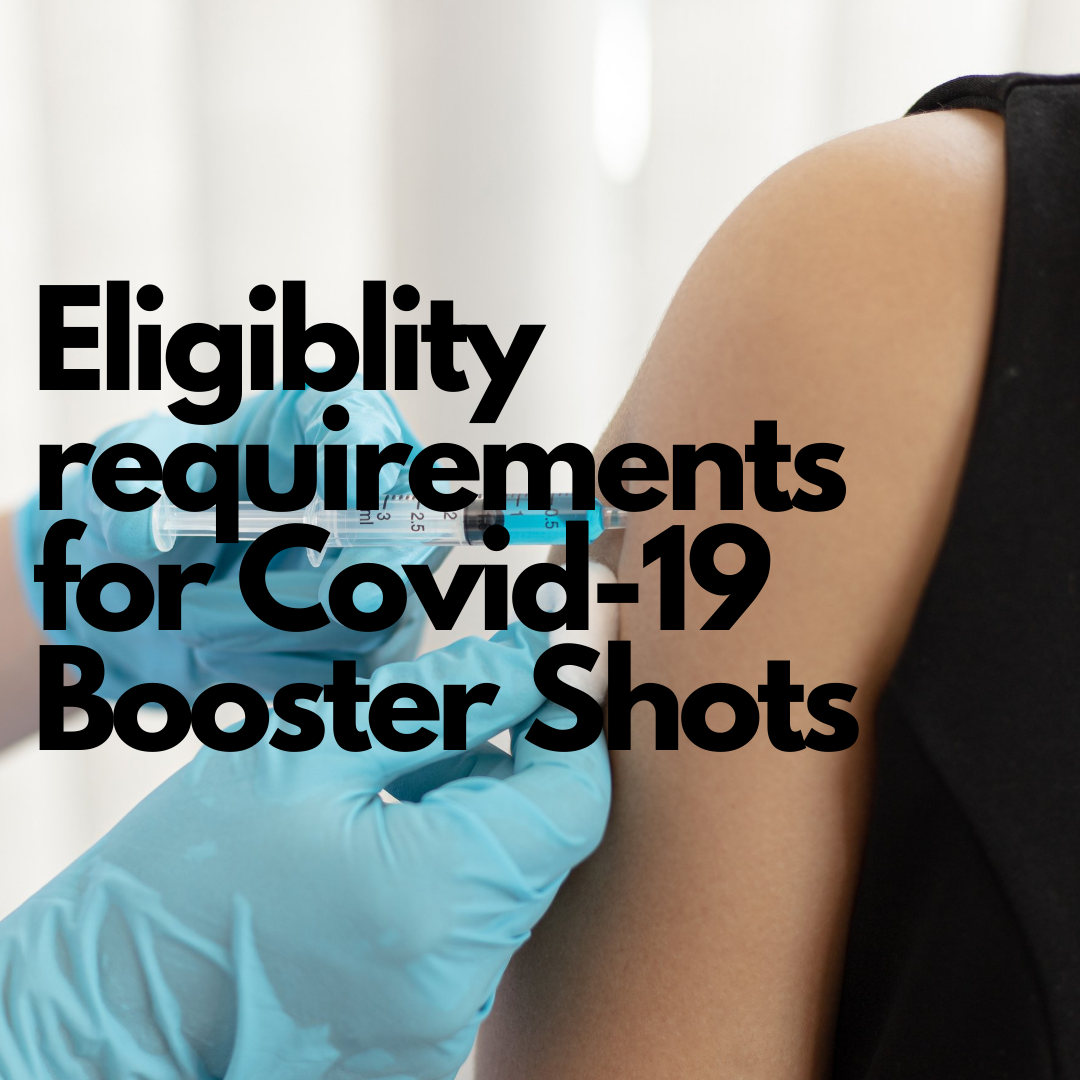
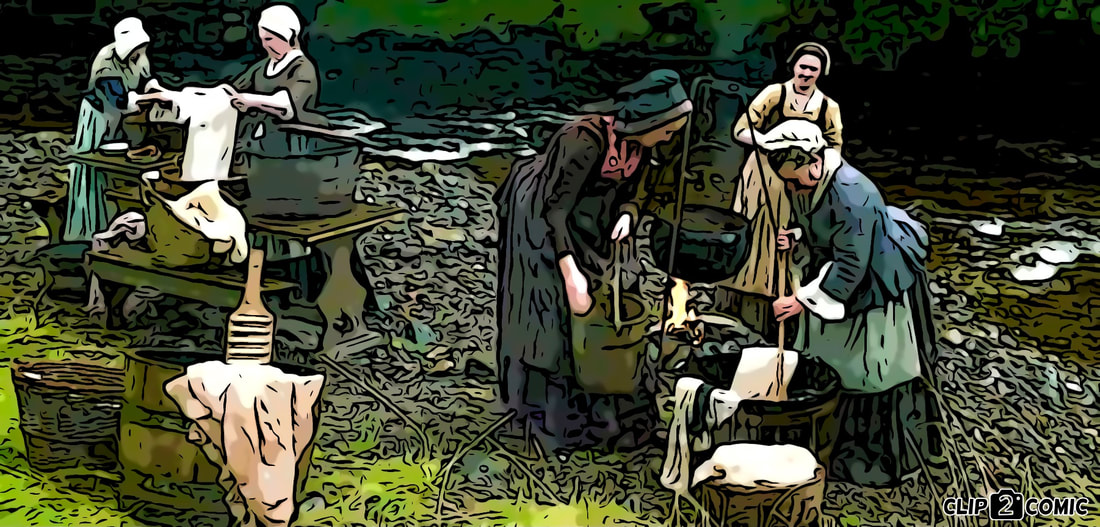





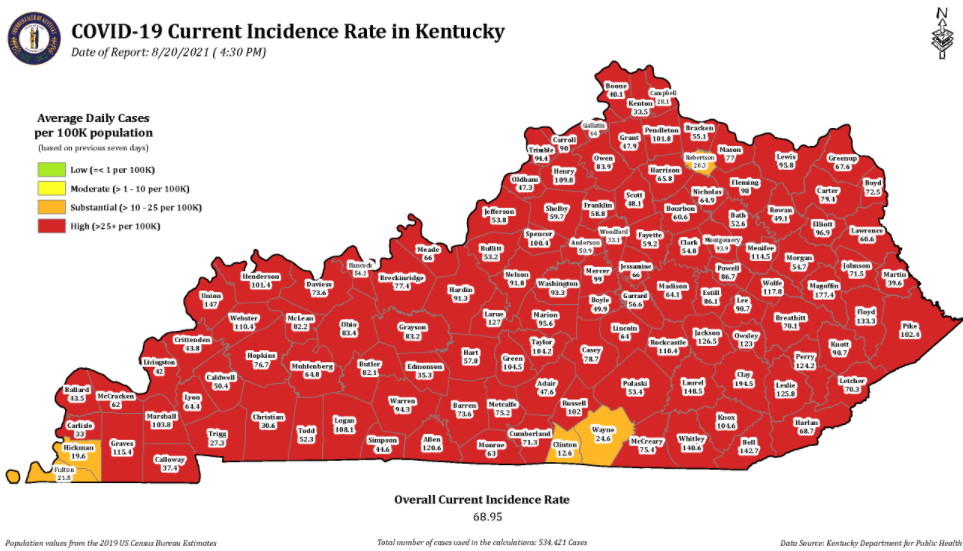
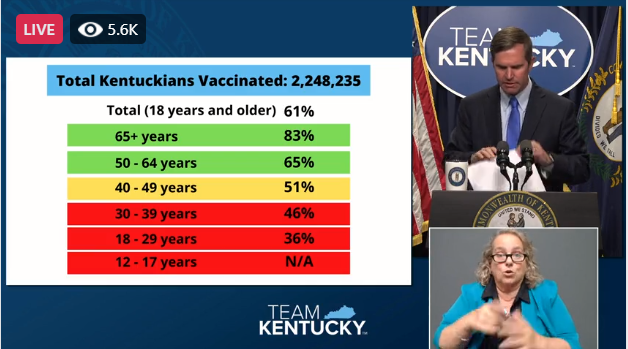
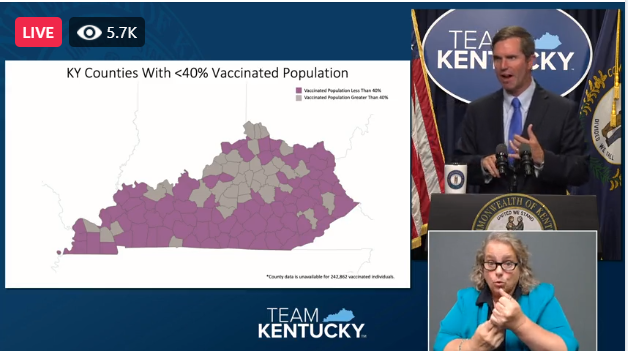


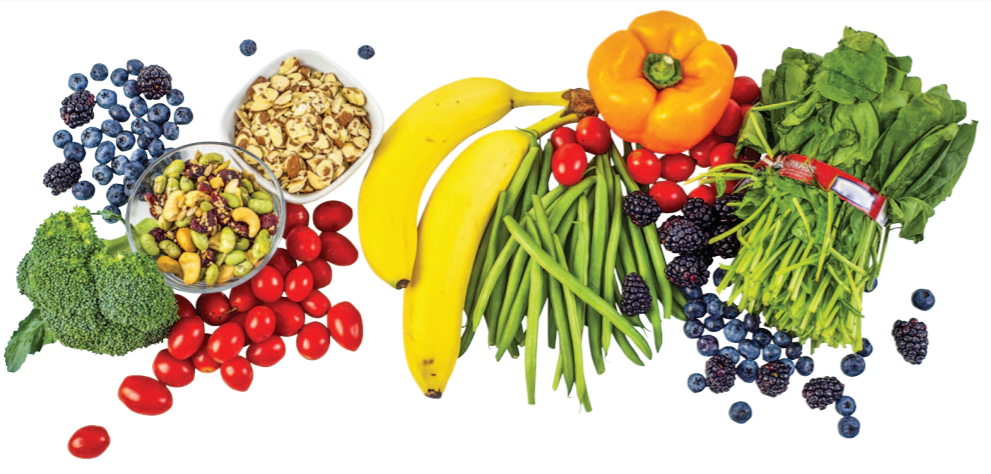
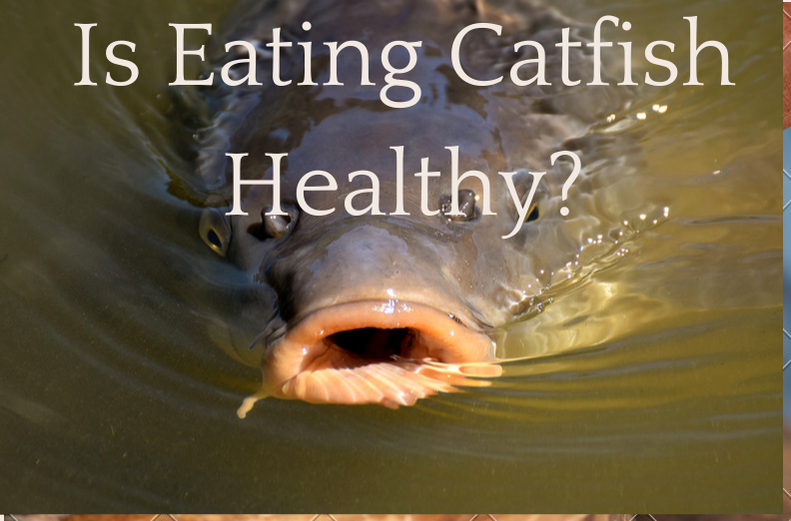





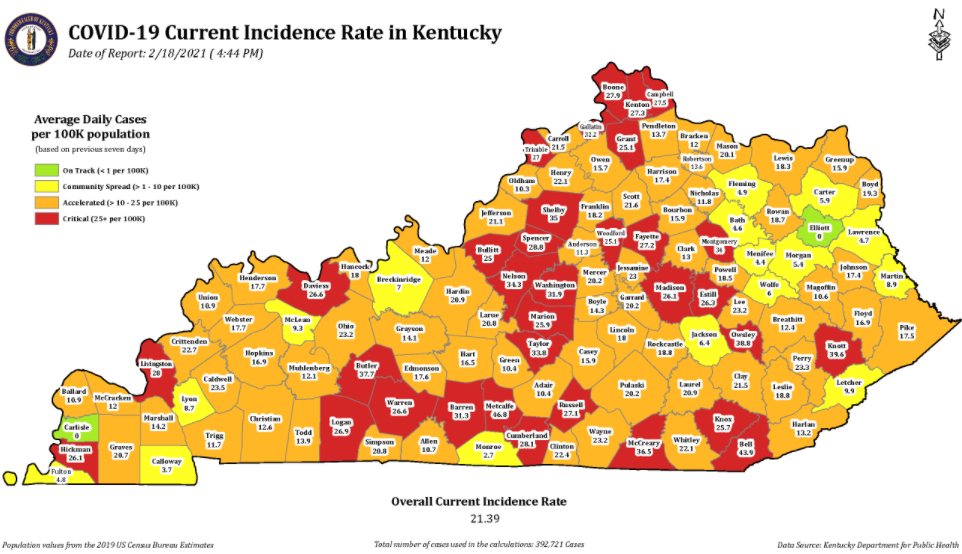

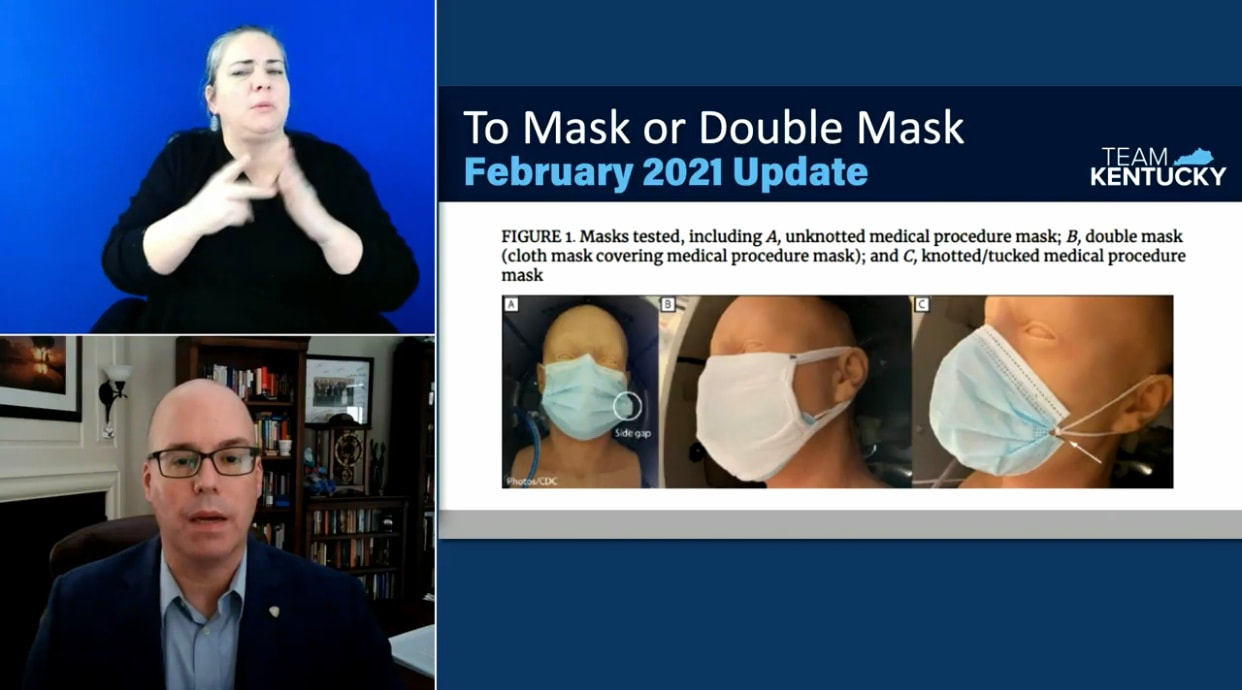

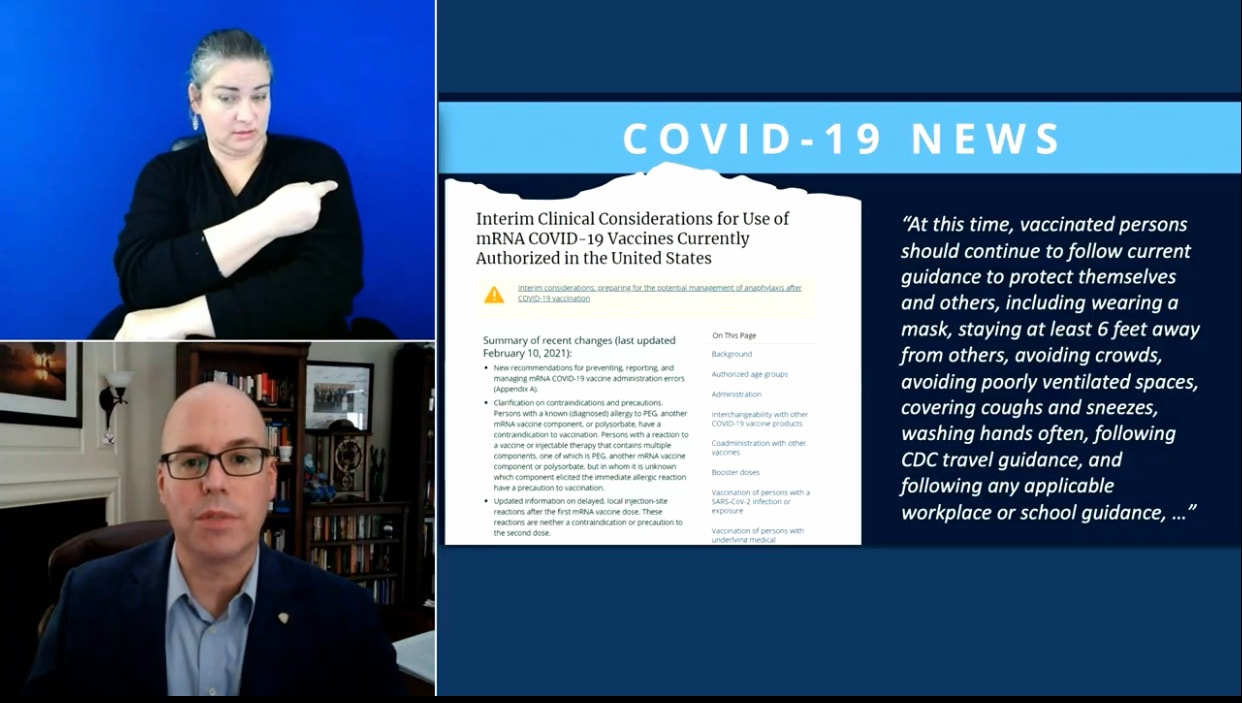


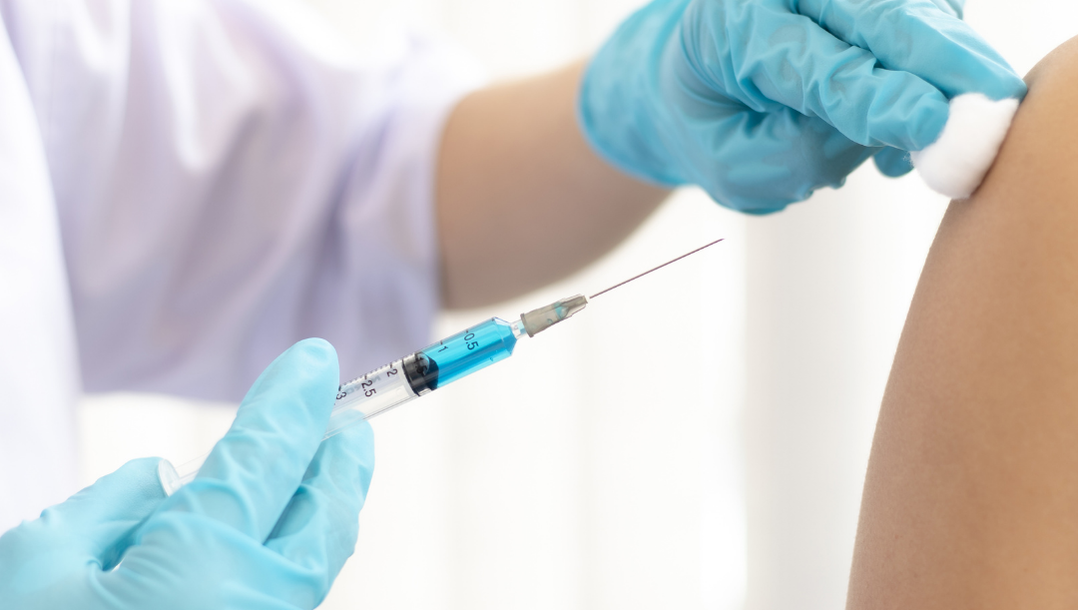


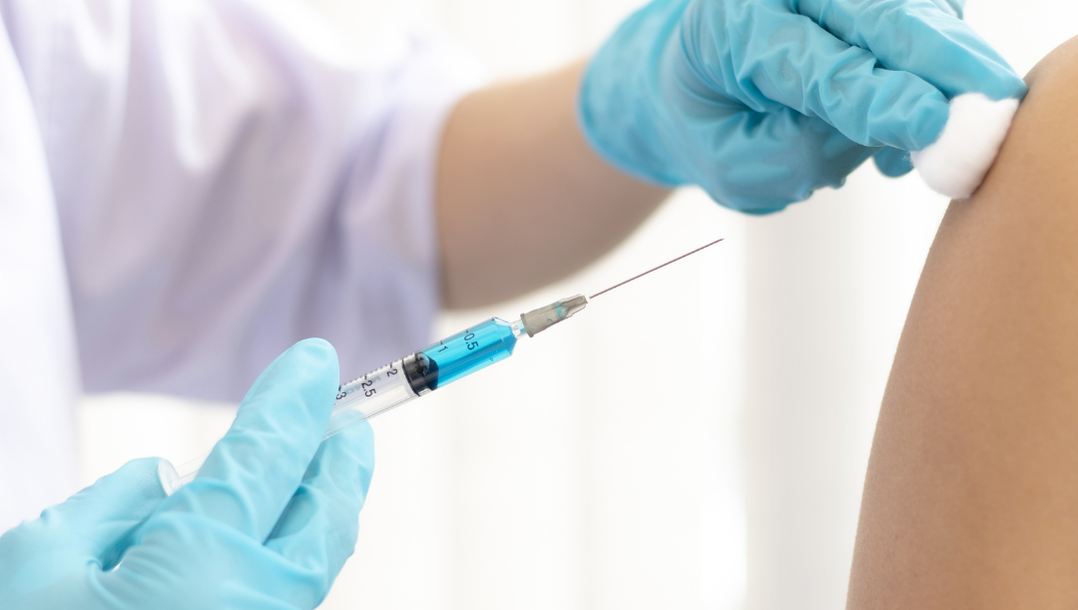

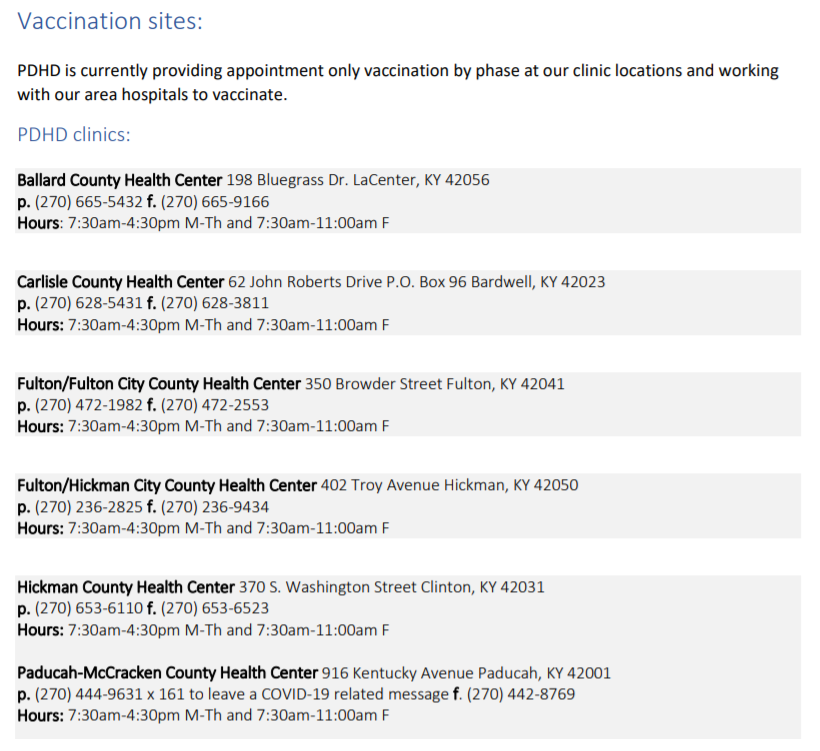
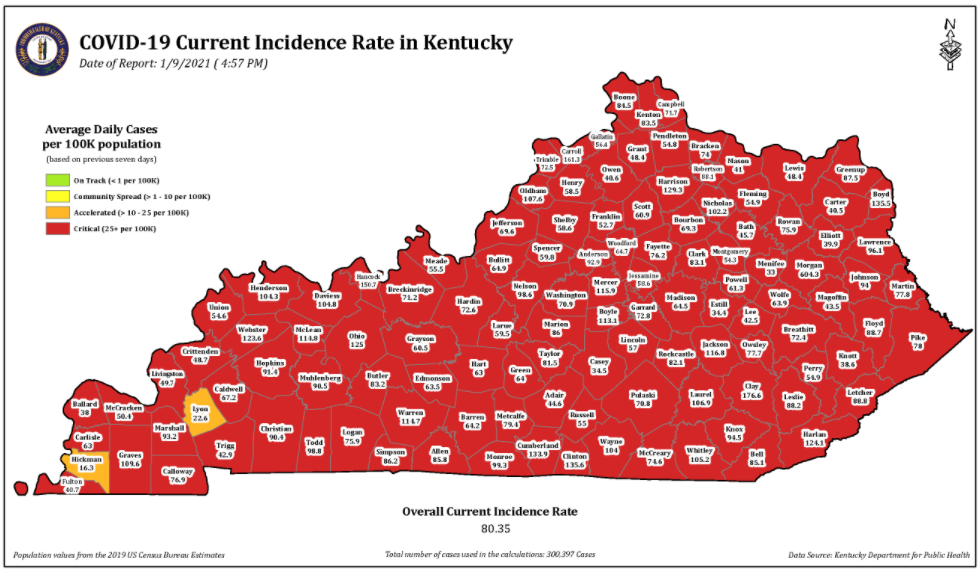
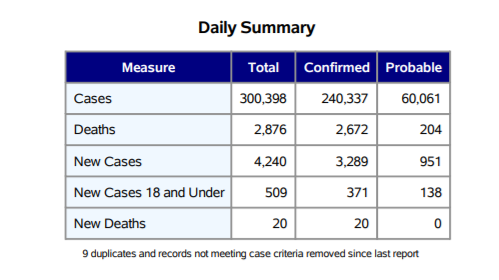
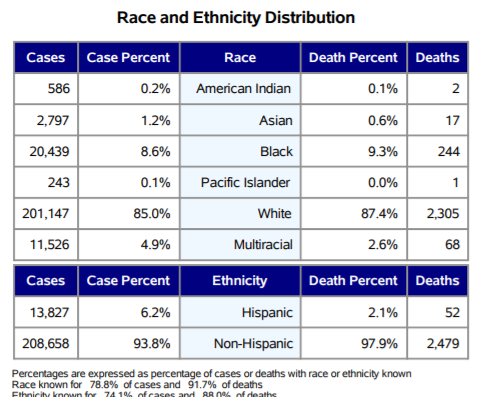




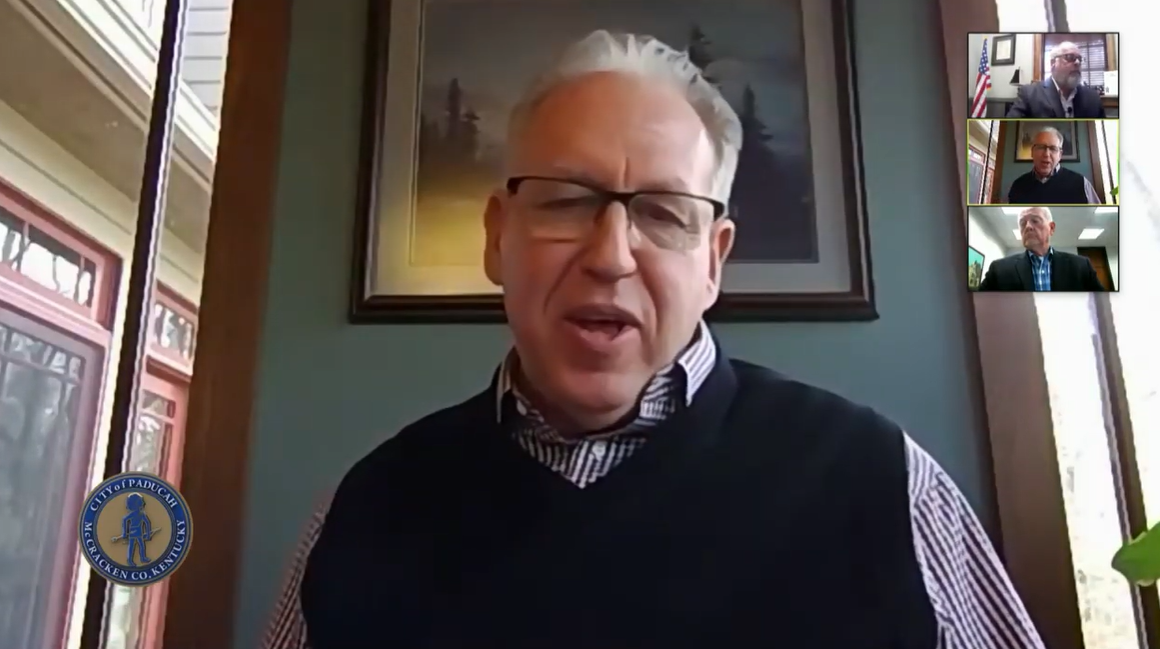

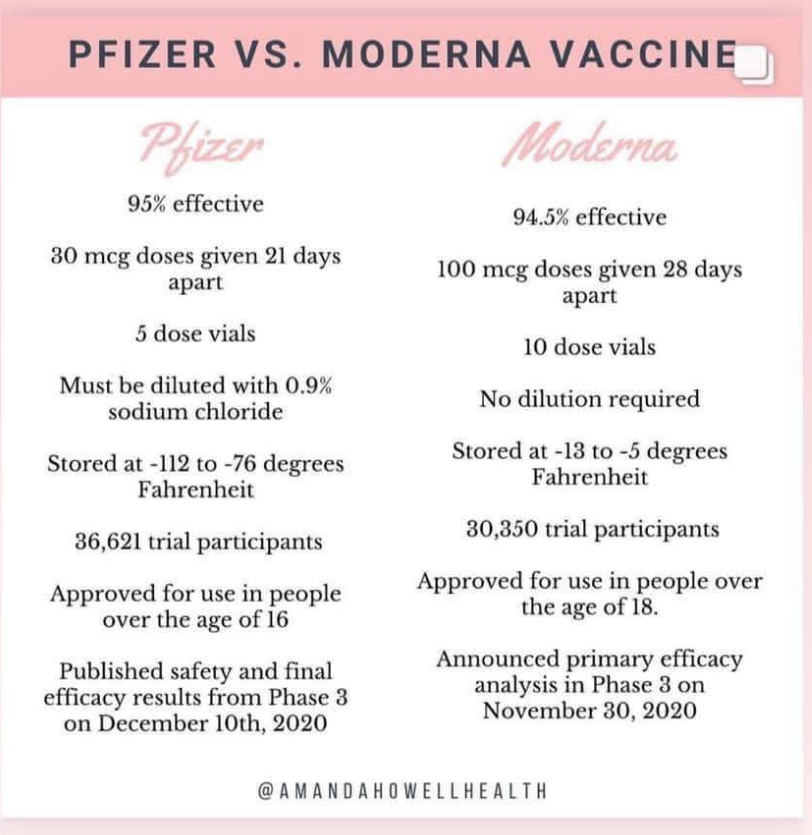
 RSS Feed
RSS Feed